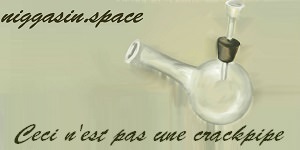https://www.nytimes.com/2021/02/18/opinion/fake-news-media-attention.htmlIt’s often counterproductive to engage directly with content from an unknown source, and people can be led astray by false information. Influenced by the research of Sam Wineburg, a professor at Stanford, and Sarah McGrew, an assistant professor at the University of Maryland, Mr. Caulfield argued that the best way to learn about a source of information is to leave it and look elsewhere, a concept called lateral reading.
For instance, imagine you were to visit Stormfront, a white supremacist message board, to try to understand racist claims in order to debunk them. “Even if you see through the horrible rhetoric, at the end of the day you gave that place however many minutes of your time,” Mr. Caulfield said. “Even with good intentions, you run the risk of misunderstanding something, because Stormfront users are way better at propaganda than you. You won’t get less racist reading Stormfront critically, but you might be overloaded by information and overwhelmed.”
One way to combat this dynamic is to change how we teach media literacy: Internet users need to learn that our attention is a scarce commodity that is to be spent wisely.
In 2016, Mr. Caulfield met Mr. Wineburg, who suggested modeling the process after the way professional fact checkers assess information. Mr. Caulfield refined the practice into four simple principles:
1. Stop.
2. Investigate the source.
3. Find better coverage.
4. Trace claims, quotes and media to the original context.
Otherwise known as SIFT.
The SIFT method and the instructional teaching unit (about six hours of class work) that accompanies it has been picked up by dozens of universities across the country and in some Canadian high schools. What is potentially revolutionary about SIFT is that it focuses on making quick judgments. A SIFT fact check can and should take just 30, 60, 90 seconds to evaluate a piece of content.
The four steps are based on the premise that
you often make a better decision with less information than you do with more[/]. Also, spending 15 minutes to determine a single fact in order to decipher a tweet or a piece of news coming from a source you’ve never seen before will often leave you more confused than you were before. “The question we want students asking is: Is this a good source for this purpose, or could I find something better relatively quickly?” Mr. Caulfield said. “I’ve seen in the classroom where a student finds a great answer in three minutes but then keeps going and ends up won over by bad information.”
As a journalist who can be a bit of a snob about research methods, it makes me anxious to type this advice. Use Wikipedia for quick guidance! Spend less time torturing yourself with complex primary sources! A part of my brain hears this and reflexively worries these methods could be exploited by conspiracy theorists. But listening to Ms. Ladam and Mr. Caulfield describe disinformation dynamics, it seems that snobs like me have it backward.

